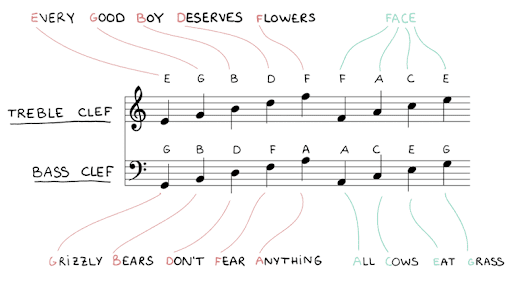Reading Piano Sheet Music for Beginners
Learning to read piano sheet music is like learning a new language. Once you know the symbols, patterns, and note positions, it becomes a skill that transforms your piano journey
Whether you're brand new or brushing up on basics, this guide will walk you through the essential steps, clearly and simply.
What Is Piano Sheet Music?
Piano sheet music is a paper or screen with symbols that show you how to play a song on the piano. It tells you:
• Which keys to play
• When to play them
• How long to hold each key
Instead of words, it uses lines, notes, and marks. These signs help your eyes tell your hands what to do.

Understanding the Staff
The staff is a set of five lines. Notes sit on these lines or in the spaces between. Each spot gives a different sound. In piano music, we use two staffs together. This is called the grand staff:
• The top lines are for your right hand (higher notes)
• The bottom lines are for your left hand (lower notes)
• You read both at the same time when playing.
Reading the Clefs
Clefs show where the notes begin:
• Treble Clef: Also called the G-clef, it circles around the G note. Used for high sounds. You'll play these with your right hand.
• Bass Clef: Also known as the F-clef, it marks where the F note sits. Used for low sounds. You'll use your left hand for these notes.
The note Middle C sits between the two staffs. It's a good place to start learning from.

Notes in Piano Sheet Music
Notes are little round shapes that tell you which piano key to press. They also show how long to hold the key down. Here are the basic note types:
• Whole Note - hold for 4 counts
• Half Note - hold for 2 counts
• Quarter Note - hold for 1 count
• Eighth Note - hold for Half counts
Rhythms and Rests
Understanding rhythm helps you play with the correct timing.
• Time signatures (like 4/4 or 3/4) show how many beats per measure.
• Rests are symbols that tell you when to pause playing.
Practicing clapping rhythms before playing them helps you get the timing right.
Tips for Reading Music Sheet for Piano
• Start slow - Focus on one line at a time.
• Say note names aloud while playing.
• Practice reading daily - Repetition builds memory.
• Use note-reading games or flashcards for fun practice
Why Learning to Read Sheet Music Matters
Being able to read piano sheet music opens doors. You can play new songs, follow lessons more easily, and understand music deeply. It's a skill that brings freedom to your playing.